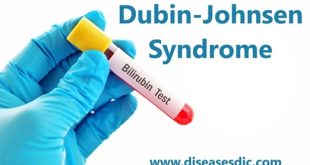What is Dyslexia?
Dyslexia is a brain-based type of learning disability that specifically impairs a person’s ability to read. Dyslexia is not a result of lack of motivation, sensory impairment, inadequate instructional or environmental opportunities, or other limiting conditions, but may be made worse by these conditions. It is also genetic, so it not uncommon for multiple members of an extended family to be diagnosed with dyslexia.
It is characterized by difficulties with accurate and/or fluent word recognition and by poor spelling and decoding abilities. These difficulties typically result in problems with reading comprehension and reduced reading experience that can impede the growth of vocabulary and background knowledge.
Although dyslexia is the result of a neurological difference, it is not an intellectual disability. Dyslexia is diagnosed in people of all levels of intelligence, average, above average, and highly gifted. With the right support and intervention, however, people with learning disabilities can succeed in school and go on to successful, often distinguished careers later in life.
Epidemiology
The percentage of people with dyslexia is unknown, but it has been estimated to be as low as 5% and as high as 17% of the population. While it is diagnosed more often in males, some believe that it affects males and females equally.
Types of Dyslexia
There are currently no official diagnostic “types” of dyslexia, though researchers are looking into the groups of symptoms that some people experience.
Overall, identifying an individual’s specific challenges can help them get the right support. Some people experience:
Phonological dyslexia: Also known as dysphonetic or auditory dyslexia, this involves having difficulty breaking down words into smaller units, making it hard to match sounds with their written form.
Surface dyslexia: Also called dyseidetic or visual dyslexia, this involves having trouble recognizing words by sight, making words hard to learn and remember.
Rapid naming deficit: This involves having trouble naming a letter or number when the person sees it.
Double deficit dyslexia: This involves having difficulty isolating the sounds to name letters and numbers.
Sometimes people also refer to “directional dyslexia,” meaning that they have difficulty telling left from right. This is a common feature of the condition. If a person has difficulty with numbers and math, specifically, the medical term for this dyscalculia. It sometimes occurs with dyslexia or independently.
Risk factors
The risk factors of dyslexia include:
- Family history of dyslexia or other learning disabilities
- Exposure to alcohol, nicotine or certain drugs during pregnancy that affects the fetal development
- Premature birth or low birth weight
Causes of Dyslexia
Researchers haven’t yet pinpointed exactly what causes dyslexia. But they do know that genes and brain differences play a role. Here are some of the possible causes of dyslexia:
Genes and heredity: Dyslexia often runs in families. About 40 percent of siblings of people with dyslexia also struggle with reading. As many as 49 percent of parents of kids with dyslexia have it, too. Scientists have also found genes linked to problems with reading and processing language.
Brain anatomy and activity: Brain imaging studies have shown brain differences between people with and without dyslexia. These differences happen in areas of the brain involved with key reading skills. Those skills are knowing how sounds are represented in words, and recognizing what written words look like.
But the brain can change. Studies show that brain activity in people with dyslexia changes after they get proper instruction or tutoring. And scientists are learning more all the time.
Impairment in the brain’s ability
Dyslexia symptoms
Symptoms in pre-schoolers
Some of the symptoms of dyslexia or SLD in a pre-schooler could include:
- Delayed speech
- Problems with pronunciation
- Problems with rhyming words and learning rhymes
- Difficulty with learning shapes, colours and how to write their own name
- Difficulty with retelling a story in the right order of events.
Symptoms in primary school children
- Some of the symptoms in a primary school-age child could include:
- Problems with reading a single word
- Regularly confuses certain letters when writing, such as ‘d’ and ‘b’ or ‘m’ and ‘w’
- Regularly writes words backwards, such as writing ‘pit’ when the word ‘tip’ was intended
- Problems with grammar, such as learning prefixes or suffixes
- Tries to avoid reading aloud in class
- Doesn’t like reading books
- Reads below their expected level.
Symptoms in high school children
Some of the symptoms in a high school student could include:
- Poor reading
- Bad spelling, including different misspellings of the same word in one writing assignment
- Difficulties with writing summaries
- Problems with learning a foreign language
Symptoms in adults
Some of the symptoms in an adult could include:
- Reading and spelling problems
- Doesn’t like reading books
- Avoids tasks that involve writing, or else gets someone else to do the writing for them
- Better than average memory
- Often a greater than average spatial ability – the person may be talented in art, design, and mathematics or engineering.
Complications of Dyslexia
Dyslexia can lead to a number of problems, including:
Trouble learning: Because reading is a skill basic to most other school subjects, a child with dyslexia is at a disadvantage in most classes and may have trouble keeping up with peers.
Social problems: Left untreated, dyslexia may lead to low self-esteem, behavior problems, anxiety, aggression, and withdrawal from friends, parents and teachers.
Problems as adults: The inability to read and comprehend can prevent a child from reaching his or her potential as the child grows up. This can have long-term educational, social and economic consequences.
Children who have dyslexia are at increased risk of having attention-deficit/hyperactivity disorder (ADHD), and vice versa. ADHD can cause difficulty sustaining attention as well as hyperactivity and impulsive behavior, which can make dyslexia harder to treat.
Diagnosis and test for Dyslexia
Dyslexia is a difficult disorder to diagnose. There are many factors the psychologist or other health professional reviews to diagnose the disability. The testing determines the child’s functional reading level and compares it to reading potential, which is evaluated by an intelligence test.
All aspects of the reading process are examined to pinpoint where the breakdown is occurring. The testing further assesses how a child takes in and processes information and what the child does with the information. The tests determine whether a child learns better by
- Hearing information (auditory),
- Looking at information (visual), or
- Doing something (kinesthetic)
They also assess whether a child performs better when allowed to give information (output), by saying something (oral), or by doing something with their hands (tactile-kinesthetic). The tests also evaluate how all of these sensory systems (modalities) work in conjunction with each other.
The tests administered are standardized and are considered highly reliable.
- The child should not feel as if there is something wrong because testing is occurring.
- Many of the tests use a game-type or puzzle format which can help make the child feel more comfortable.
- Children should get a good night’s sleep prior to the testing and have a good breakfast.
- If the testing is done in a school setting, the teacher can prepare the child by talking about the person who will come and do special work with the child.
- With young children, the psychologist may visit the child’s classroom before the testing so that the child is familiar with him.
- Whether or not the testing is done at school, the parent may want to talk to their child about a new person coming to work with them. However, parents should not try to coach the child concerning the testing. It is recommended that parents not be present during the testing.
However, experts are now using the following examinations to diagnose dyslexia:
Kaufman Assessment Battery for Children– It’s divided into two major categories, supplementary and core, with more than 15 subtests.
Stanford-Binet Intelligence Scale– Measures the cognitive ability and intelligence of young children; this can help diagnose any developmental problems or delay.
Benton Visual Retention Test– Assesses both the visual memory and perception of children as young as eight years old; it may also be used to diagnose dyslexia in adults.
For a proper diagnosis, one of the first steps is to seek an appointment with a general practitioner who will perform the initial tests. He or she may then recommend any specialist depending on the findings.
Treatment of Dyslexia
Therapies for Dyslexia
Since dyslexia is an issue with language, challenges often begin with phonological awareness, a language skill that is critical for reading.
Kids with poor phonological awareness have trouble recognizing and working with the sounds in words. They’re much more likely to struggle with learning to read.
Specialists can teach kids with dyslexia to recognize word sounds. They can also teach phonics connecting letters with sounds, breaking words into sounds, and blending sounds into words. Together, these skills allow kids to sound out words they don’t know. That process is known as decoding, and its core to reading.
Professionals who provide this type of help include psychologists, teachers, reading specialists, learning specialists, and speech-language pathologists (SLPs) who focus on learning challenges. Some specialists work in schools and others in private settings.
They use lots of different strategies to build phonological awareness and other reading skills. They might work on rhyming, for instance. Or they may help kids recognize syllables by having them clap out the ones in their names.
Dyslexia Treatment for Children: School Interventions
If dyslexia is diagnosed during childhood, parents and school specialists can set up in-classroom accommodations designed to help the student catch up and get back on track in reading.
Some tried-and-true school-based interventions for dyslexia in children include:
Providing a vocabulary list and summaries ahead of time: This gives the student a chance to look over the pre-reading material on her own time feeling more confident and prepared when the actual reading assignment begins
Encouraging all students to mark-up text with markers, sticky notes, or anything else to help students sort, arrange, and highlight important concepts in the text
Providing audio versions of the material, whenever possible: Reading along to a book on tape can be beneficial for students with dyslexia
Providing alternative materials such as books with similar content at a more appropriate reading level
Using mnemonic devices to help students with rote memorization
Dyslexia Treatment for Adults: Workplace Interventions
Under the Americans with Disabilities Act (ADA), adults with dyslexia are entitled to reasonable accommodations from their employers to manage the condition. Some common accommodations for dyslexia in the workplace include:
Making use of assistive technologies: Smartphone apps, computer programs, and other high-tech solutions can be used to counter dyslexia’s challenges in the workplace. Try text-to-speech software to help you read long documents, or word prediction software to help make daily reading and writing tasks quicker.
Providing materials for meetings or presentations ahead of time: Being allowed to prepare for big meetings in advance can help you feel more confident and less likely to be blindsided by a question from the CEO
Asking a co-worker to proofread important documents before you send them: This can help you avoid the small spelling or grammar mistakes that are often viewed as “unprofessional”
Asking for summaries when possible: If it’s not absolutely necessary for you to read every word of a 30-page report, ask your boss if someone could summarize the key points for you
Making use of larger print, different fonts, and different coloured paper: Simple changes to a document can make it easier for someone with dyslexia to read, without negative effects on anyone else. If you prefer a certain font or text colour, ask that your co-workers use it when sending you emails or reports. It’s a small change that can go a long way!
Every student and adult is different, and it’s important for parents and adults to advocate fiercely in order securing the tools needed to succeed in school or the workplace.
Prevention
There is no known way to prevent dyslexia. However, because the neurologic problems that cause dyslexia may be related to prenatal factors, and children who are born prematurely or at a low birth weight are at higher risk for dyslexia, it is wise to follow the usual recommendations for a healthy pregnancy.
 Diseases Treatments Dictionary This is complete solution to read all diseases treatments Which covers Prevention, Causes, Symptoms, Medical Terms, Drugs, Prescription, Natural Remedies with cures and Treatments. Most of the common diseases were listed in names, split with categories.
Diseases Treatments Dictionary This is complete solution to read all diseases treatments Which covers Prevention, Causes, Symptoms, Medical Terms, Drugs, Prescription, Natural Remedies with cures and Treatments. Most of the common diseases were listed in names, split with categories.








is it a headache because each an everyday I have headache and I don’t know why?
It may be due to your mental stress or it might be due to weakness of nerves to your eyeballs. We strongly recommend you to consult a doctor for appropriate diagnosis of the cause.
it’s very complicated disease also destroy the Brain activity?